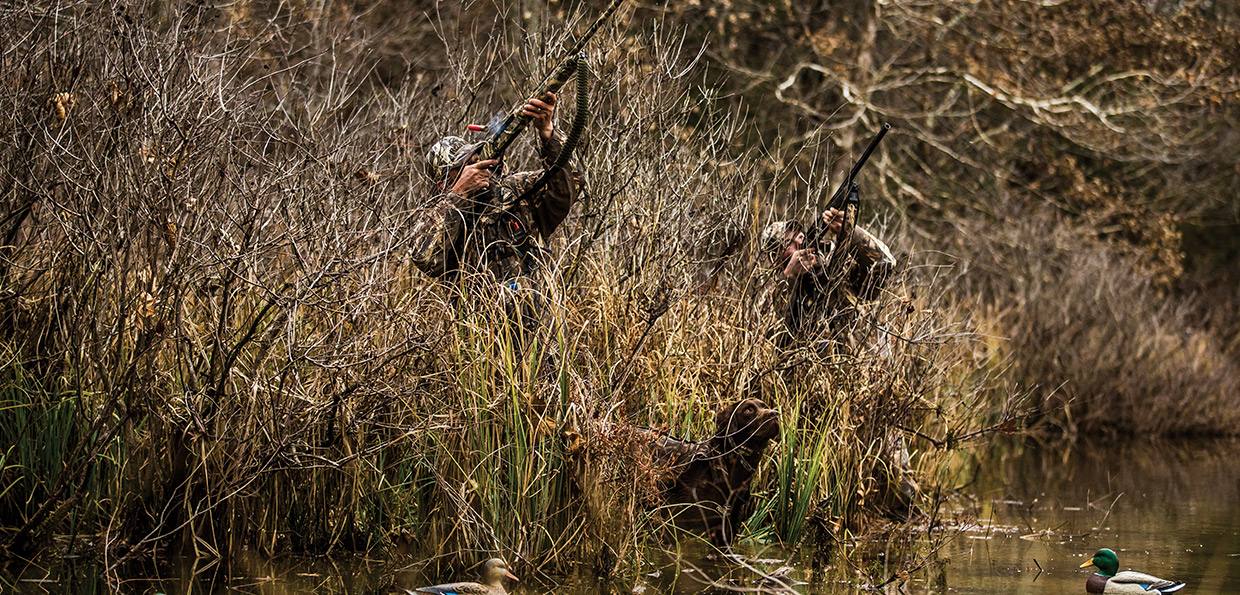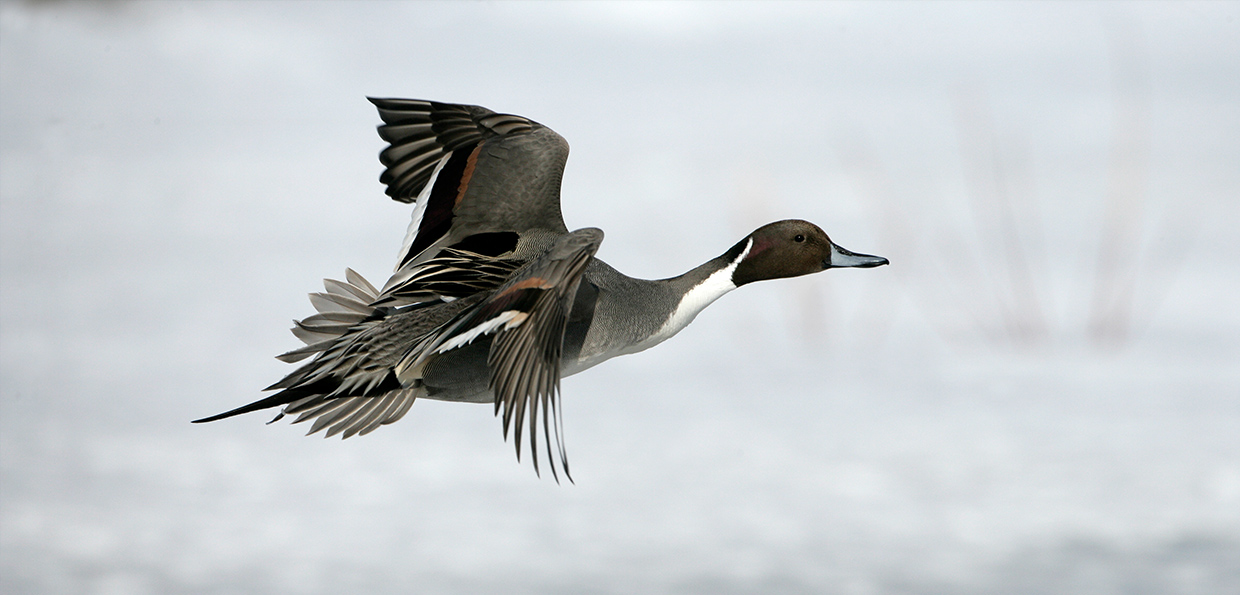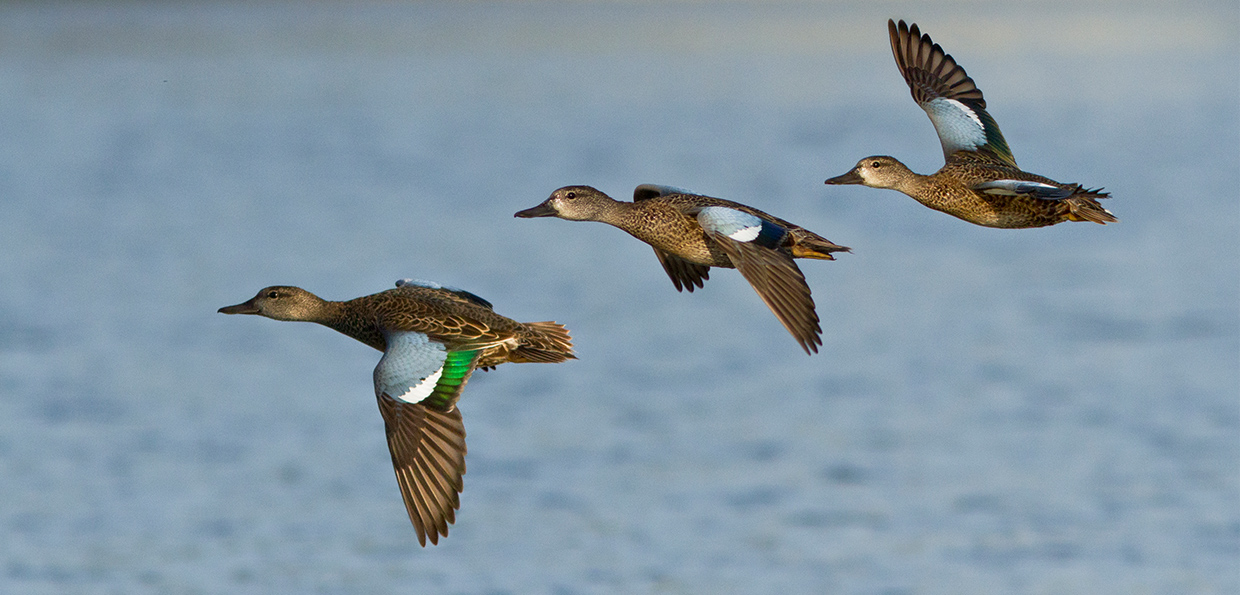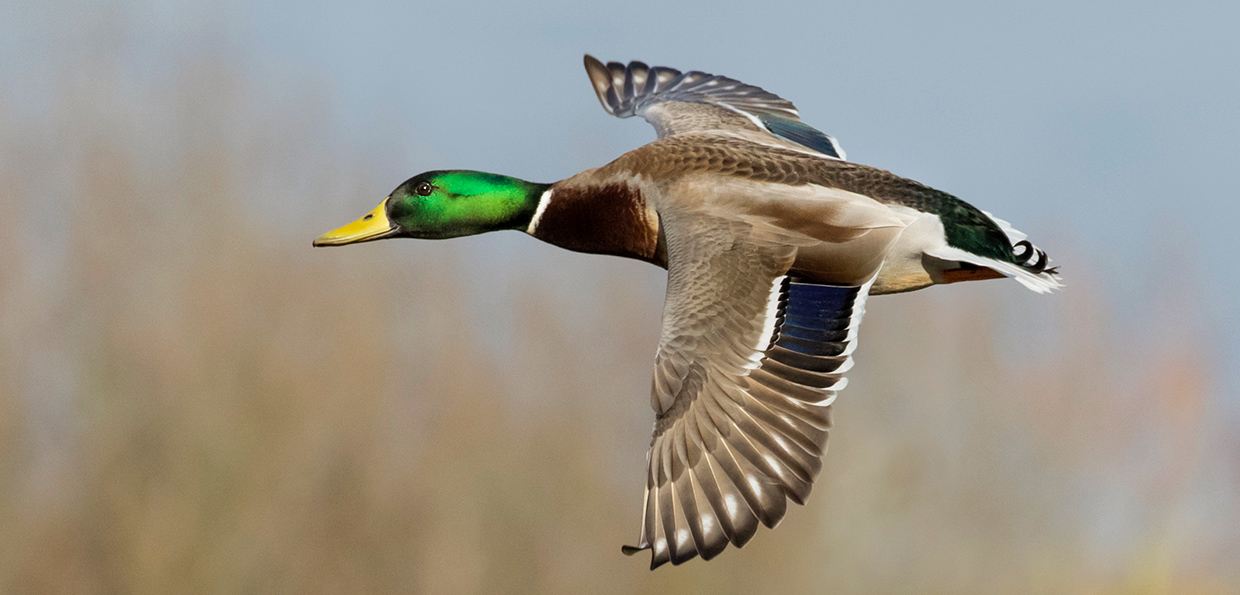Water Hunt

Most hunters that are familiar with the rush of the water hunt know that it doesn’t come without diligence, patience, and strategy. Wetlands bring about new challenges, like keeping dry, concealing yourself on the open waters, and managing your decoys and down lines. But with the right gear and advice, you’ll be taking down birds left, right, and centre.
Getting to Know Your Prey
On the water, you’ll be targeting “divers”, or waterfowl that spend their time in deeper waters, diving below the surface to feed. Because there are species specific bag limits, you’ll want to brush up on your knowledge before heading out (or bring along an identification book), as you’ll be relying on your ability to identify birds based on their appearance, sometimes from far distances.
Diving ducks “take the plunge” when feeding, disappearing entirely under the water. Divers also prefer middle areas of bigger bodies of water to help them take off.
Dabbling ducks have the ability to fly straight up off the water and can be found in much smaller water sources such as potholes and dug outs. Diving ducks have to “run” across the water in order to reach the speed necessary for take-off.
All too often, hunters end up underestimating birds, when in fact, they are much more intelligent than we give them credit for. They are constantly learning from our mistakes in order to survive. But you can use this to your advantage too: pay close attention to their behavior, how they react to your calls, your decoy spread and your blind. Remember what works today doesn’t mean it will work every time. The key is to adapt accordingly. Everyday is different. Changing conditions and the birds’ demeanour will determine what they want to see on any particular day.
Diving Ducks
- Redhead
- Scaup
- Ring-necked
- Sandhill Crane
- Goldeneye
- Bufflehead
- Canvasback
Scouting Strategies
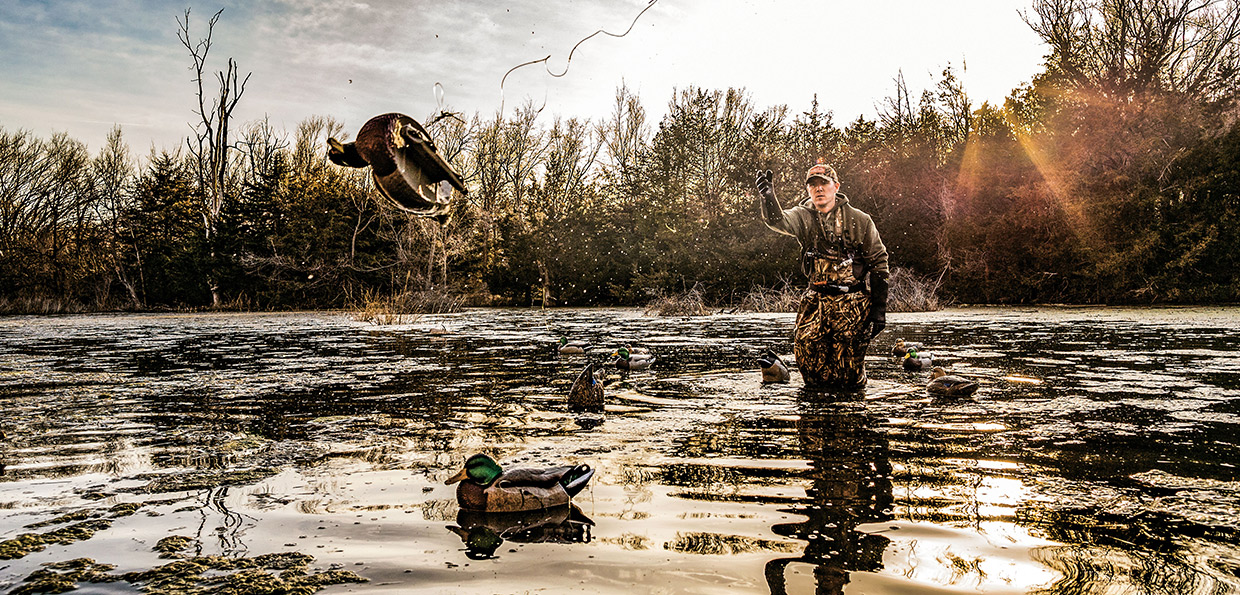
Water Hunt: Decoys
When on the water hunt, you’ll need a generous supply of decoys to entice overhead birds to settle in the body of water you’re set up on.
The best way to do this is to have a realistic set up involving multiple species and enough motion to convince birds to land
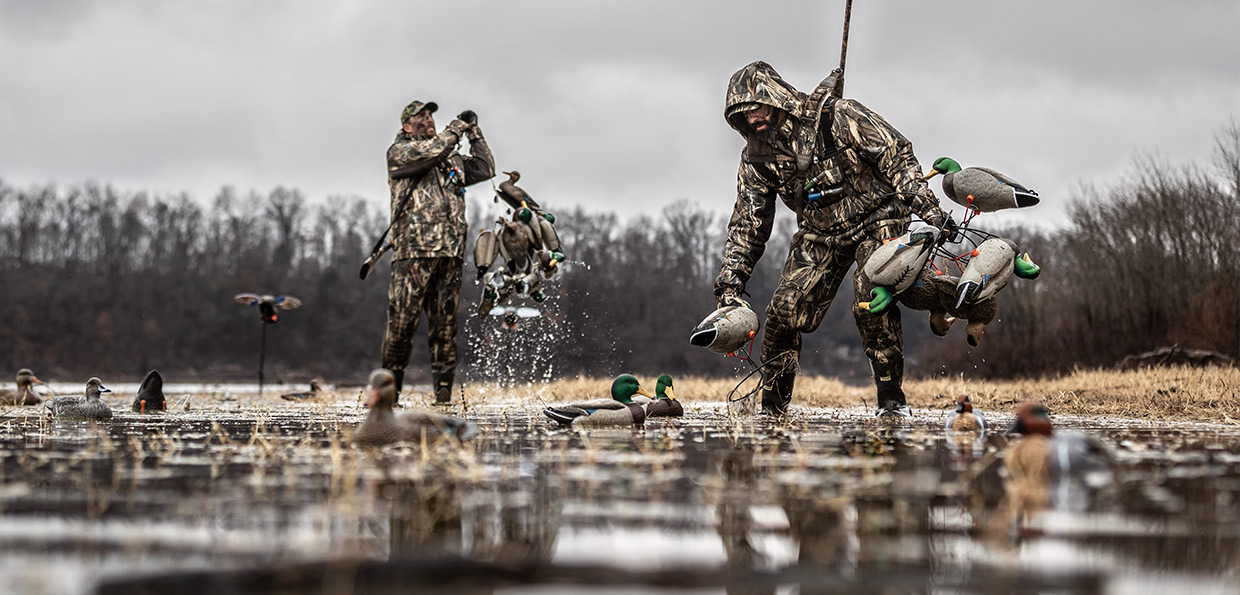
Water decoys are called floaters, and there are several ways to deploy them. Some prefer to anchor each with its own cord, which allows ducks to float with the currents slightly but still remain in one specific spot. A lot of hunters will rig up their floaters to a main line (formations will vary depending on the hunter, but think of the way a dog-sledding team is rigged up). However you want to set up your spread, remember that you’ll have to retrieve them all once you pack up for the day or move on to the next location.
Mix and match your decoys and ensure you are using floaters that are in varied positions (preening, feeding, etc.) for a realistic depiction. If you are hunting on a smaller body of water or there’s a sandbar of high enough elevation near the water’s edge, bring a few land decoys along as well to set up along the shoreline. This is especially important if you’ve set up your blind along the shoreline.
Pay attention to how big the body of water you’re working with is. Don’t overrun a small creek with hundreds of decoys; that will just look unnatural.
Try to incorporate some motion. If you opt to use a Robo Decoy, position it so that its wings hit the sun to catch overhead birds’ attention. Another option is to use a jerk cord, a line that connects some or all of your floaters and can be manipulated to simulate motion.
Some prefer to use a wind stock decoy, but this will only work if there is enough wind to keep it looking three dimensional. Some hunters like to use a combination of all three, so you can experiment and find out what works best for you.
Gear
Suiting Up for a Water Hunt
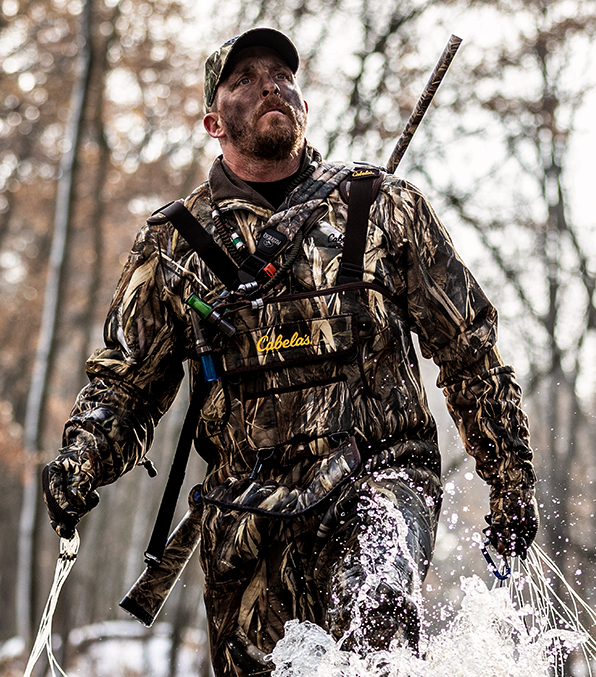
The water hunt presents new challenges, but nothing that can’t be overcome with the right gear. You never want to be the person who has to cut the hunt short because of inadequate clothing or improper tools, so here are a few things to keep in mind:
- A Retriever Dog: A lot of hunters bring a retriever dog along with them to retrieve fallen birds. Without a dog, you’ll just have to ensure you have someone comfortable wading out into the water to grab fallen birds.
- Waterproof Gloves: This is crucial, especially in colder temperatures. Even if you have a retriever dog, you’ll still need to set up your decoy spread, and waterproof gloves will help keep you warm and dry.
- Waders: Again, at some point you’ll probably need to get in the water, whether it’s to lay out an elaborate decoy spread or secure proper camo to your boat blind. Waders are the best practical solution.
- Floating Key Ring: The last thing you need is to be stranded in the middle of the lake with your keys at the bottom of it. Whenever hunting near bodies of water, it’s always a good idea to waterproof your key ring.
- PFD: Whenever you’re travelling by boat, always keep a PFD in tow. Bodies of water can be unpredictable, and accidents happen. It’s always better to be safe than sorry.
Calling Strategies
Effective calling is more of an artform than a science, and the best callers gained their expertise through experience and trial and error, so it’s likely you’ll have to do a lot of the same in order to find success. Think of your calls as tools to be deployed at just the right moment, intended to convince birds who seem unsure about your decoys.
Depending on whether you’re trying to entice duck or geese, there are different call strategies to employ. There are four different types of duck calls that are crucial for a waterfowl hunter to know:
- The Quack
- Feed Call
- Mating Call
- Comeback Call
Canada Geese produce a large variety of sounds, and sophisticated waterfowl hunters will have a wide range of calls in their back pocket to entice birds, but you can accomplish a lot just by knowing two basic calls:
- The Long-Range Hail: This a two-note sound that can be described as a “her-onk” used to entice birds far off in the distance. It should start out low and growling, and then shifts in the second note to a higher-pitched and sharper sound. As birds approach, speed up the call and slowly decrease the volume.
- The Cluck: Once birds are within a closer range, transition to this is one-note sound that resembles an “onk” and repeat over and over until the birds are within shooting range


Pro Tips
Practice Makes Perfect: The best way to gain proficiency in the art of calling is to watch instructional videos and practice at home. Try to mimic sounds exactly and play close attention to inflection and tone. Ensure you’re drawing air up from your diaphragm and not your cheeks.
Don’t Overdo It: Most experienced hunters say the number one mistake new hunters make is calling too much. Just like with decoys, the object of the game is to make sounds that feel authentic to ward off any concerns incoming birds might have.
Timing is Everything: Keep your call pressed to your lips or easily accessible, so the moment you read incoming or overhead birds’ hesitation, you can perform a quick call to seal the deal. Typically, a hesitating bird will move their heads and necks or disrupt their flight pattern. If you see any of those signs, it’s time to call!
Consider Their Position: Try to call at a time where birds don’t have to redirect their flight path to get to you. You should call at the moment they’d have a clear path to the “X”.
Read the Room: When you finally get out into the field and you’re utilizing your calling strategies, pay attention to how birds are responding. What works, what doesn’t. Every bit of experience will help you during your next hunt.
On The Hunt
Shoot Your Shot
